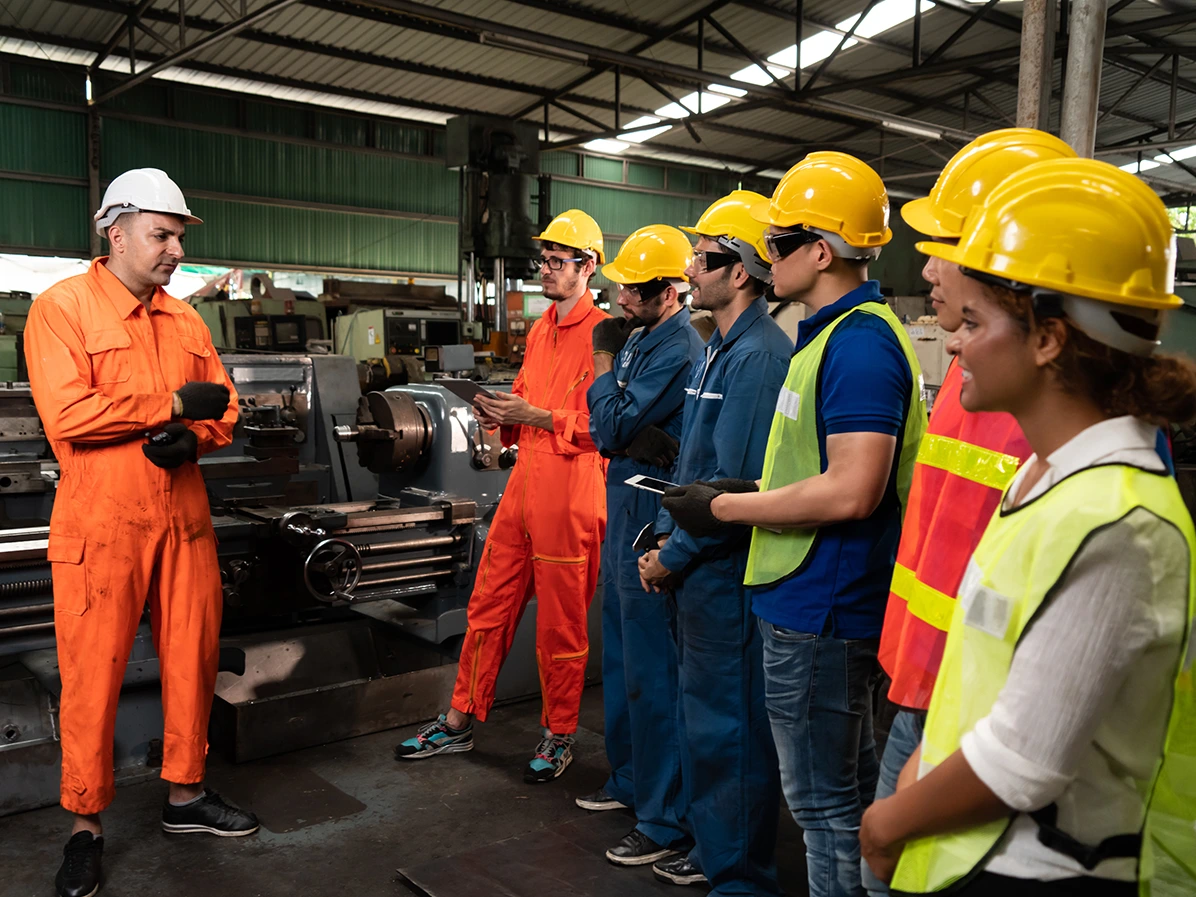Contents
Safety Training vs. Coaching: What’s the Difference?
27 March 2025 - Evotix
Which is better for your organization: safety training or coaching?
Trick question! In a great safety program, training and coaching work together to give employees a complete, comprehensive learning experience. Employees receiving continual coaching in addition to training will build practical experience, engagement and knowledge of health and safety procedures and best practices.
Well-rounded health and safety learning programs provide employees and organizations with a range of benefits including safer workplaces, fewer incidents, lower employee absence or turnover rates, reduced costs and increased productivity. In this blog, we’ll discuss the differences and advantages of training and coaching and explain how you can put them to work in your organization.
What Is Health and Safety Training?
According to the Occupational Safety and Health Administration (OSHA), safety training is “the planned and organized activity of a consultant to impart skills, techniques and methodologies to employers and their employees to assist them in establishing and maintaining […] a place of employment which is safe and healthful.”
In other words, occupational health and safety training is a traditional learning method used by organizations to teach employees and management about policies, procedures and best practices pertaining to workplace health and safety. This training serves as the foundation for a safer, compliant workplace.
Benefits of Health and Safety Training
1. Reduce Workplace Accidents: Proper health and safety training on policies, procedures and best practices ensures employees gain an understanding of workplace risks and how to mitigate them. This helps reduce the risk of workplace accidents and incidents.
2. Lower Expenses: A well-trained workforce experiences fewer accidents, reducing the financial burden of medical expenses, workers' compensation claims and legal fees.
3. Ensure Compliance: Safety training is compulsory and regulated by regulatory bodies such as OSHA (S.) and HSE (U.K.). When employees complete safety training programs, they receive documents certifying their knowledge.
4. Measure Employees’ Progress: Most traditional, classroom-based training models include assessments that measure employees’ knowledge of policies and procedures.
Despite these benefits, adequate training doesn’t always mean an employee will be able to put that learning into practice. For employees to practice the skills they learn in training, health and safety coaching is a necessary addition.
What Is Health and Safety Coaching?
Coaching is an ongoing process, often occurring in the workplace, in which an experienced consultant engages in open-ended dialogue with an employee to improve the employee’s practical knowledge and skills regarding health and safety in their workplace.
Unlike traditional training, which is structured and formal, coaching is more interactive and personalized. Safety coaching enhances employees' ability to apply what they have learned by reinforcing concepts in real-world settings and fostering a proactive approach to workplace safety. It helps employees apply safety concepts in real-world situations and adapt to workplace-specific challenges.
Benefits of Health and Safety Coaching
1. Impact Workplace Experience: Safety coaching in the workplace allows employees to build their skills in the environment where they’ll be used. It enables employees to respond to real-life situations with the knowledge they learned in training.
2. Individualize Learning: Most training programs offer standardized knowledge to a large group, but coaching often involves individualized, one-on-one sessions between an experienced individual and a learner. Safety coaching is also adaptable to unique circumstances. If an employee needs additional help, a coach can provide it.
3. Engage Employees Regularly: Safety coaches work regularly with employees, embedding learning into the workday. This approach creates a positive attitude around health and safety.
4. Encourage Behavioral Improvement: Coaching helps employees develop safer habits by reinforcing best practices and correcting risky behaviors in real time. This leads to long-lasting improvements in workplace safety.
Why Should You Combine EHS Training and Coaching?
Training provides employees with the foundation they need to understand safety protocols, but coaching helps them put those protocols into practice. By reinforcing training through real-world application, coaching strengthens employees' ability to respond to safety challenges.
A workplace that integrates both training and coaching fosters an environment where safety is not just a one-time event, but a core value. Regular coaching ensures that safety remains top of mind and ingrained in daily operations, helping employees become more proactive in identifying and mitigating risks.
For a truly effective health and safety program, training and coaching should go hand in hand. By combining training and coaching, team members gain confidence in their ability to handle workplace hazards, which leads to fewer incidents and a safer work environment. Organizations that implement both approaches will see long-term improvements in workplace safety, employee engagement and overall productivity.
Our Learning and Training Management tools help organizations maximize the impact of their training and coaching programs. For more information and to book a demo, click below!
RELATED BLOGS

The Ultimate Guide to EHS: What It Means and Why It Matters
7 January 2025 - Evotix
Before diving in, let’s clarify a few key acronyms.

Safety Check: Identifying When To Revise Your Health and Safety Processes
26 September 2023 - Evotix
Irrespective of your industry, your organization holds the vital responsibility of ensuring the safe return of your employees to their homes each day. When an incident occurs, it falls on you to..

The Difference Between Reactive and Proactive Health & Safety Management
28 March 2023 - Evotix
It may sound complex, but the difference between proactive and reactive health and safety management is simple.
